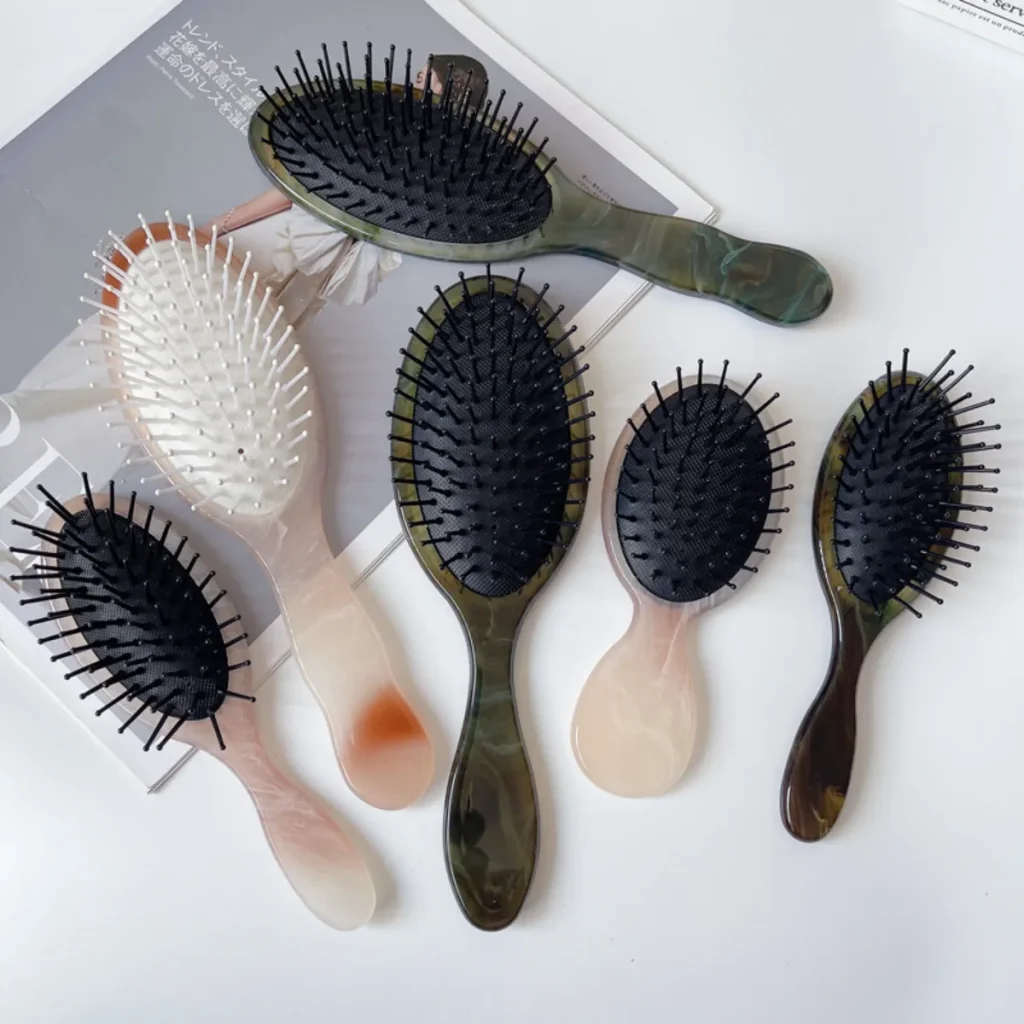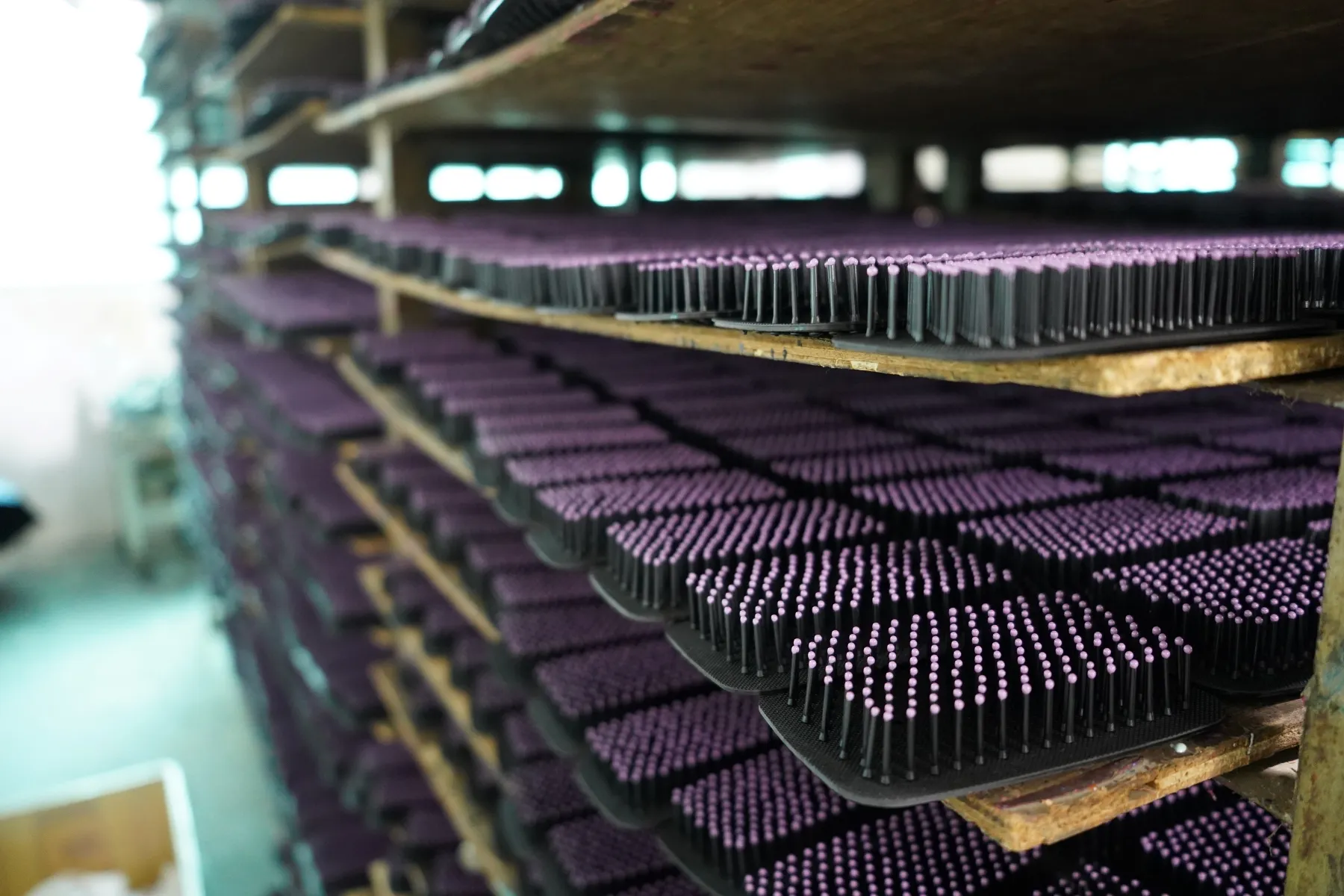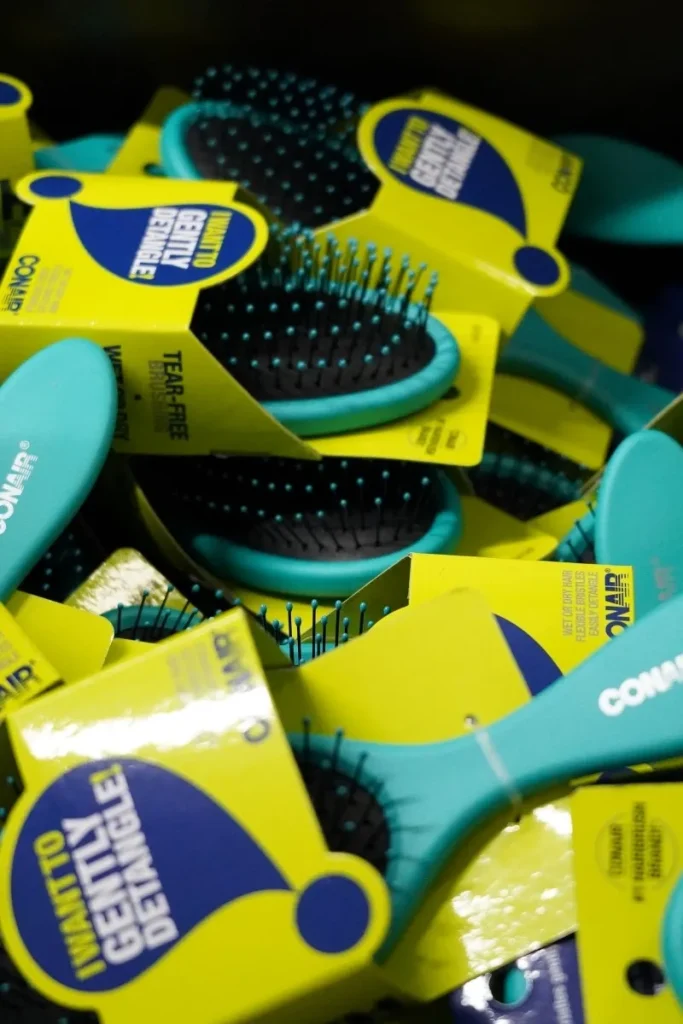Acetate hair brushes are well known for their elegant, marbled handles and premium look. To achieve these finishes, manufacturers apply several surface treatment techniques. Common options include polishing, clear coating, silk screen printing, hot stamping, and engraving with color filling. Each process creates a different effect on the surface, influencing both appearance and durability.
Polishing
Acetate hair brushes are well known for their elegant, marbled handles and premium look. To achieve these finishes, manufacturers apply several surface treatment techniques. Common options include polishing, clear coating, silk screen printing, hot stamping, and engraving with color filling. Each process creates a different effect on the surface, influencing both appearance and durability.
Clear Coating
For acetate hair brushes, the standard coating method is a transparent clear coat. This protective layer is applied over the polished acetate to enhance gloss, improve smoothness, and shield the surface from scratches, moisture, and stains. Importantly, the clear coating does not cover or alter acetate’s natural marbling pattern—instead, it emphasizes and preserves the material’s depth and beauty. It also helps maintain the polished look for longer, ensuring the brush retains its premium appearance even after extended use. In addition, clear coating can act as a protective seal when combined with decorative techniques such as screen printing or hot stamping, keeping those details crisp and durable.
Silk Screen Printing
Silk screen printing is often used to add brand logos, text, or simple patterns to acetate brushes. The process presses ink through a mesh stencil directly onto the surface, creating bold, vibrant graphics. On acetate, the results are sharp and long-lasting, with inks that resist fading, peeling, or water damage. Screen printing is cost-efficient for medium to large production runs and is one of the most reliable ways to showcase a logo on a brush handle.
Hot Stamping (Foil Stamping)
Hot stamping uses heat and pressure to transfer metallic or colored foil onto the surface. The result is a shiny, reflective detail—for example, gold or silver brand marks, decorative lines, or accent logos. This method gives acetate brushes a premium look and is highly durable, as the foil layer bonds firmly to the surface. Hot stamping is especially popular for luxury brushes where a metallic logo or detail reinforces brand identity.
Engraving with Color Filling
Engraving with color fill involves carving a logo or design into the acetate handle and then filling the recessed areas with paint or resin. The engraving itself is permanent, while the color fill makes the design stand out visually. This technique creates a premium, tactile finish with excellent durability, since the markings cannot wear off easily. It is often chosen for personalized or high-end brushes where longevity and distinctiveness are key.
Comparison of Methods
Durability: Polishing improves surface resistance but may dull over time. Clear coating adds a protective layer against scratches and moisture. Screen printing inks adhere strongly and resist fading. Hot stamping is abrasion-resistant and long-lasting. Engraving with fill is the most permanent option.
Appearance: Polishing highlights acetate’s natural marbling. Clear coating enhances gloss while keeping the original pattern visible. Screen printing adds colorful, opaque designs. Hot stamping brings in reflective metallic accents. Engraving creates a subtle, premium effect with depth and color contrast.
Cost: Polishing is labor-intensive but standard. Clear coating requires additional material and spraying but remains cost-effective. Screen printing has setup costs but is economical for larger runs. Hot stamping requires custom dies, making it better suited for larger orders. Engraving with fill is the most costly and is typically reserved for small batches or premium products.
Applications: Polishing is standard for luxury acetate brushes. Clear coating is used to preserve shine and protect the surface. Screen printing is best for logos or branding. Hot stamping suits premium, metallic details. Engraving with fill is ideal for exclusive or personalized brushes.
Comparison of Methods
The surface treatment of acetate hair brushes plays a critical role in both aesthetics and performance. From the natural gloss of polishing to the protective benefits of clear coating, and from bold printed logos to metallic hot stamping or engraved details, each technique adds unique value. Choosing the right method depends on the balance of appearance, durability, and cost—but all of them enhance the appeal of acetate hair brushes in different ways.




